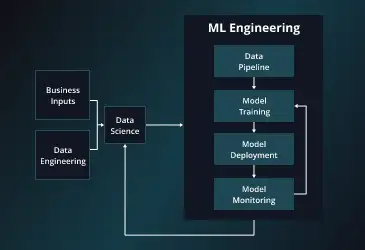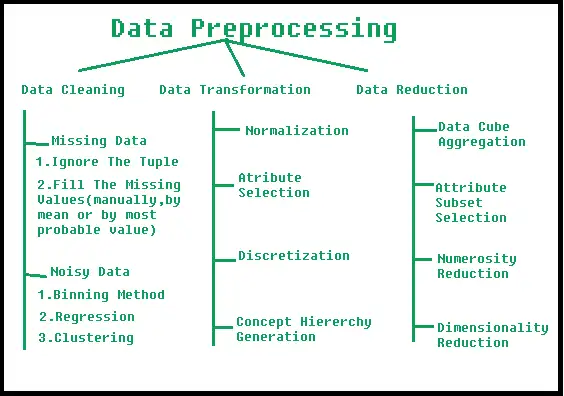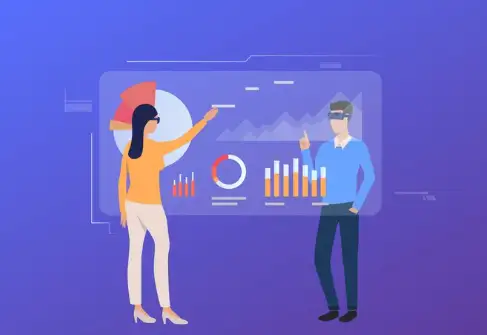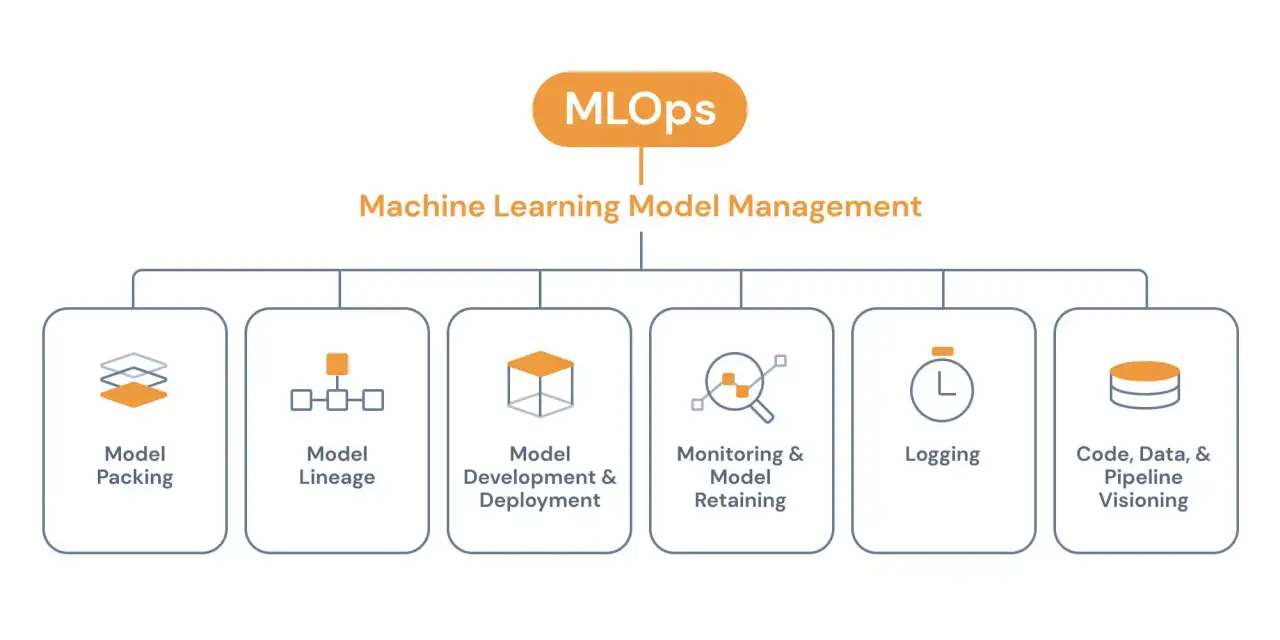Introduction
Machine Learning (ML) is revolutionizing the way to solve complex problems across various domains. From healthcare to finance, ML models are driving breakthrough innovations with a success rate of over 60%. [Source: Statistica]
However, building high-performing ML models is no easy feat. It requires a deep understanding of data preprocessing, feature engineering, model selection, and hyperparameter tuning.
In this comprehensive guide, we delve into ML model engineering services, exploring techniques and best practices that empower you to develop robust and accurate ML solutions. Also discover how to preprocess data effectively, engineer informative features, and select the most suitable algorithms for your specific problem.
But that's not all! We'll also uncover the way to fine-tuning your models through hyperparameter optimization. Thus ensuring optimal performance and accuracy. From adopting a data-driven approach to ensuring model interpretability and transparency, this guide covers it all.
Dive in and elevate your skills to create cutting-edge AI solutions that drive real-world impact with ML model engineering.
Understanding ML Model Engineering

Machine Learning (ML) models are algorithms designed to learn from data and make decisions based on that learning.
In the ML field, engineering a model involves selecting the appropriate algorithm, configuring it for the problem at hand, training it on the relevant data, and fine-tuning it for optimal performance.
The training and evaluation of an ML model is incredibly important in ensuring the model is well-performing. The model must be evaluated using relevant metrics, and the training process should be iterative, allowing for continual refinement of the model until it is considered successful.
The ML model engineering process is a set of steps that an ML engineer follows in designing, training, fine-tuning, and deploying an ML model.
It typically involves the following stages:
Data collection and preprocessing
Feature engineering
Model selection
Hyperparameter tuning
Model deployment
The process of ML model engineering poses several challenges, such as selecting the right algorithm for a specific problem, dealing with data quality and quantity issues, and addressing issues of overfitting and underfitting.
Next, we will cover some techniques for effective ML model engineering service.
Techniques for Effective ML Model Engineering
Building on the understanding of Machine Learning (ML) model engineering service, this section explores key techniques that play a crucial role in improving the effectiveness of ML models.
Data Preprocessing Techniques

Data preprocessing is a fundamental step before training an ML model. It involves preparing the data by eliminating noise, handling missing values, and normalizing it.
Techniques such as outlier detection, data cleaning, and data transformation help ensure the quality and consistency of the dataset. Data preprocessing sets the foundation for robust and reliable ML models.
Feature Engineering Methods
Feature engineering aims to extract the most informative and relevant features from the available data. This process involves creating new features, reducing redundancy, and eliminating irrelevant features.
By selecting the right set of features, an ML model becomes more effective in making accurate predictions. Feature engineering requires a deep understanding of the problem domain and the relevant data.
Model Selection Strategies

Model selection is choosing the best algorithm or model architecture for a specific problem. It is crucial to consider factors such as the type of data, problem complexity, and desired performance.
ML engineers must evaluate various algorithms and their specific strengths and limitations. By thoroughly understanding the problem and selecting the most suitable algorithm, ML models can achieve optimal performance.
Hyperparameter Tuning Methods
Hyperparameters are the adjustable settings that affect an ML model's performance. Tuning these hyperparameters is essential for achieving the best results.
Techniques such as grid search, random search, and Bayesian optimization help ML engineers find the optimal configuration of hyperparameters.
By fine-tuning the model, its performance can be further improved, leading to better predictions and outcomes.
Next, we will cover some best practices for ML Model engineering services.
Best Practices for ML Model Engineering
To ensure the effectiveness and reliability of Machine Learning (ML) models, following certain best practices is crucial. Let us look at some of ML Model Engineering services best practices below.
Adopting a Data-Driven Approach

ML models should be built on high-quality, relevant, and diverse data. A data-driven approach involves thorough exploration and analysis of the data to gain insights.
ML engineers should prioritize data collection and invest time in understanding the data before proceeding with model development.
Balancing Model Complexity and Simplicity
Finding the right balance between model complexity and simplicity is critical. While complex models may achieve high accuracy on the training data, they may struggle with generalization to unseen data.
Simplifying the model can lead to improved interpretability and better generalization. Striking the right balance is essential to avoid overfitting or underfitting the data.
Ensuring Model Interpretability and Transparency
The interpretability and transparency of ML models are essential for gaining trust and understanding their decisions.
ML engineers should strive to build explainable models. Thus allowing stakeholders to comprehend how the model arrives at its predictions.
This involves selecting interpretable algorithms, providing clear documentation, and incorporating visualizations to aid in understanding.
Suggested Reading:
Machine Learning Development in Action: Real World Use-Cases
Implementing Version Control and Reproducibility
Version control and reproducibility are crucial in ML model engineering services. Keeping track of code, data, and model versions allows for easier collaboration and facilitates reproducibility.
By implementing version control systems such as Git and documenting the entire model development process, ML engineers can ensure transparency, reproducibility, and accountability.
Now, if you want to begin with machine learning development but have no clue about how to do it, then check out the NO-CODE chatbot platform, named BotPenguin.
With all the heavy work of chatbot development already done for you, BotPenguin allows users to integrate some of the prominent language models like GPT 4, Google PaLM, and Anthropic Claude to create chatbots that are powered by machine learning for platforms like:
Next, we will cover tools and technologies for ML Model engineering services.
Tools and Technologies for ML Model Engineering
To support the ML model engineering process, there are various tools and technologies available. These tools aim to simplify and streamline the development, training, and deployment of ML models.
This section highlights some key tools and technologies used in ML model engineering.
ML Frameworks and Libraries

ML frameworks and libraries provide developers with pre-built functions and modules for efficient model development.
Popular ML frameworks like TensorFlow, PyTorch, and scikit-learn offer a wide range of functionalities, such as neural network architectures, optimization algorithms, and evaluation metrics.
These frameworks enable ML engineers to quickly prototype, train, and evaluate their models.
Cloud-based ML Platforms
Cloud-based ML platforms provide a scalable and flexible infrastructure for ML model engineering.
Platforms like Amazon SageMaker, Google Cloud AI Platform, and Microsoft Azure Machine Learning allow ML engineers to build, train, and deploy ML models in the cloud easily.
These platforms offer features such as data storage, distributed training, model serving, and monitoring, simplifying the entire ML workflow.
ML Pipeline Management Tools

ML pipeline management tools help manage and automate the ML workflow, from data preprocessing to model deployment.
Tools like Apache Airflow, Kubeflow, and MLflow provide capabilities for orchestrating the various stages of ML model engineering. These tools support task scheduling, dependency management, and model versioning, ensuring reproducibility and efficient development.
Automated ML Solutions
Automated ML solutions aim to automate and optimize the ML model engineering process. These tools, such as AutoML from Google Cloud and Azure AutoML, automate tasks like feature engineering, hyperparameter tuning, and model selection.
Using automated ML solutions, even users without extensive ML expertise can build high-performing models.
Next, we will cover applications of ML Model engineering services.
Applications of ML Model Engineering in AI Solutions
ML model engineering finds applications in various domains, revolutionizing AI solutions. Here are some key applications in different fields:
Use Cases in Various Domains
The use cases are the following:
Healthcare: ML models are used for medical diagnosis, predicting disease risks, personalized treatment recommendations, and analyzing medical imaging data.
Finance: ML models aid in fraud detection, credit risk assessment, portfolio optimization, stock price prediction, and algorithmic trading.
Marketing: ML models help in customer segmentation, personalized marketing campaigns, recommendation systems, and sentiment analysis.
Suggested Reading:
A Review on Machine Learning Development for Businesses
Successful Examples of AI Solutions Powered by ML Models
The successful examples of AI solutions powered by ML models are the following:
Self-driving cars: ML models enable autonomous vehicles to perceive their surroundings, make real-time decisions, and navigate safely.
Virtual assistants: ML models power voice assistants like Siri, Alexa, and Google Assistant, allowing natural language understanding and intelligent responses.
Computer vision: ML models enable object detection, image recognition, facial recognition, and video analysis applications like surveillance systems and autonomous drones.
Future Direction of ML Model Engineering and AI Solutions
The future of ML model engineering and AI solutions holds immense potential. Advancements in deep learning, reinforcement learning, and natural language processing will drive more sophisticated models.
ML model engineering will continue to focus on interpretability, transparency, and ethical considerations.
Additionally, the integration of AI solutions into edge devices, the Internet of Things (IoT), and real-time decision-making systems will expand the scope and impact of ML models.
Conclusion
In conclusion, machine learning models are transforming industries and unlocking new possibilities. However, building effective ML models requires expertise in areas like data preprocessing, feature engineering, model selection, and hyperparameter tuning.
By focusing on data preprocessing, feature engineering, model selection, and hyperparameter tuning, ML engineers can enhance the performance and accuracy of their models.
By mastering these techniques and following best practices, organizations can develop robust and reliable AI solutions that drive real-world impact.
Embrace the power of ML model engineering and elevate your AI capabilities. Stay ahead of the curve by adopting a data-driven approach, balancing model complexity, ensuring interpretability, and prioritizing version control.
With the right tools, technologies, and methodologies, you can unlock the full potential of machine learning and revolutionize your business operations.
The future of AI solutions starts with mastering the art of ML model engineering.
Frequently Asked Questions (FAQs)
How does ML model engineering differ from traditional software engineering practices?
ML model engineering services involves unique considerations such as data preprocessing and feature engineering, distinguishing it from conventional software engineering.
What role does model optimization play in enhancing the performance of ML models?
Model optimization involves fine-tuning algorithms to improve efficiency, accuracy, and overall performance in AI solutions.
How can ML model engineering address biases and ethical considerations in AI solutions?
Learn how ML model engineering services practices contribute to mitigating biases and ensuring ethical considerations are integrated into AI solutions.
What strategies are effective for scaling ML models in large-scale AI implementations?
Explore techniques for scaling ML models to meet the demands of large-scale AI applications, considering factors like computational resources and distributed computing.
How does ML model engineering contribute to the interpretability and explainability of AI solutions?
Understand the role of ML model engineering in creating interpretable models, fostering transparency and explainability in AI decision-making processes.


